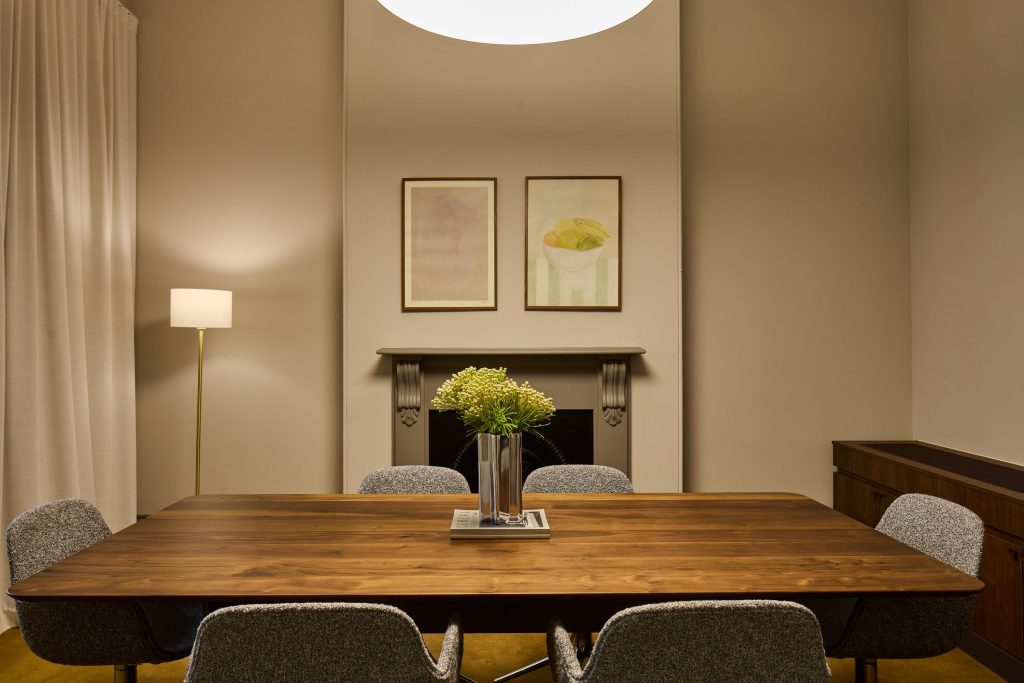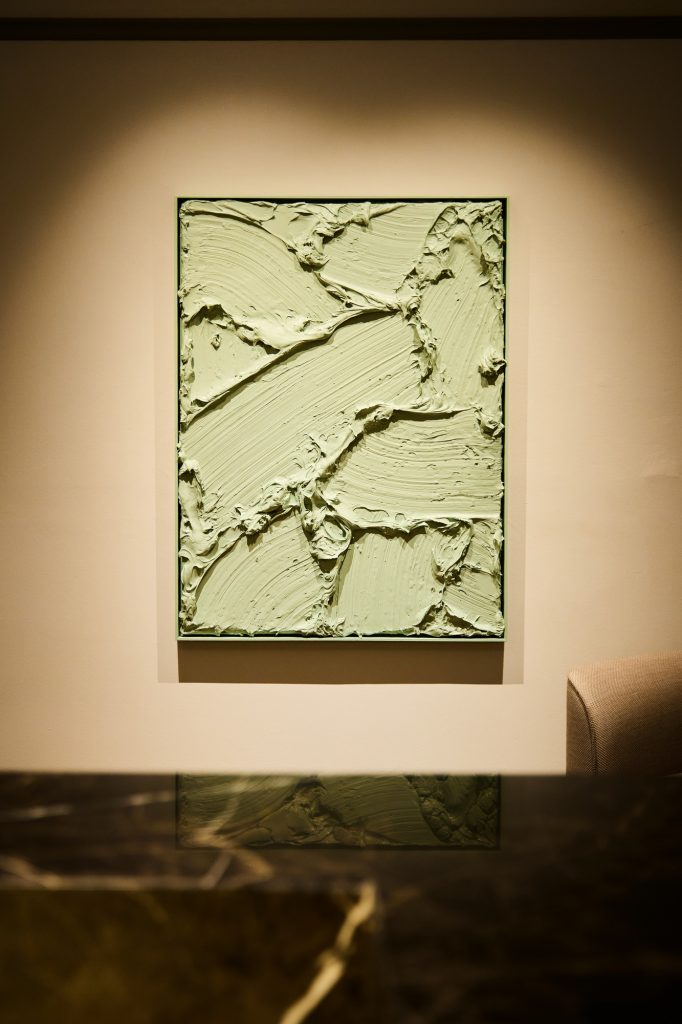
Cox and The Fin Collection design a discreet workplace for business by day and ‘martinis by night’
Cox and The Fin Collection design a discreet workplace for business by day and ‘martinis by night’
Share
Cox Architecture collaborated with art curators The Fin Collection to achieve the perfect balance of business, hospitality and adornment for the Sydney workplace-come-clubhouse of a global strategic advisory firm.
“Coffee by day, martinis by night” – it’s a brief that reads more like it’s for a bar than an office. Nonetheless, it was a refrain that a global strategic advisory firm repeated when it tasked Cox’s interiors team with designing its Australasian headquarters inside a heritage building in Sydney’s CBD.
The kind of work that happens at this organisation’s new HQ is non-traditional and requires discretion. Think private, quiet dialogues with clients about significant transactions. These conversations often transition organically from day to night, dining table to lounge, accompanied by a cocktail and a meal served by a hatted chef.

Trust and discretion are pivotal to the business’ operations, as is a sense of conviviality – all of which the environment needs to facilitate.
“The trust they have to build up with these people is achieved through this really strong hospitality overlay,” explains Cox director Brooke Lloyd.
She describes Phillip Street Workplace as more of a “clubhouse”, wherein a series of crafted rooms cater to the diverse needs of the business. For example, a sophisticated cocktail bar and lounge warmly welcome clients inside, while meeting rooms with advanced audio-visual technology function seamlessly to connect a global client base.

“They want their clients to feel as comfortable coming into a space in Sydney as they do in London or in New York,” she says.
“Every workplace – or clubhouse – has a familiar feel, but it’s very contextual to the place.”

Curating the art inside Phillip Street Workplace
Essential to this localised consistency across the clubhouses are their art collections. This, along with the styling, and detailed joinery by Finch, help add a sense of legacy to Phillip Street Workplace.
“Even though it’s a really new space, the art collection, their wine collection and their whiskey collection all start to tell that story that they’ve been here for a very long time,” Lloyd says.

To curate the artworks, Cox engaged The Fin Collection, with whom Lloyd and senior associate Samantha Ellinson had worked on hospitality projects before. Curator Amy Finlayson tells Australian Design Review that she brought together contemporary mid-century modern pieces and “quirky, progressive” sculptures by Henryk and Anya Pesce for Phillip Street Workplace.

“We definitely tried to push the boundaries as much as possible, but maintain a really beautiful sense of character, without having anything that stood out too much,” she says.
Artistic choices from The Fin Collection
A key piece by Skye Larocca greets you in luxurious, calming colours in the hallway as you walk into the space, says Finlayson.

Upstairs, the main meeting room features an undulating, brass Ksenia Shinkarenko painting. Its colour, and the accents peppered throughout the whole interior design, take cues from the heritage nature of the clubhouse site, which was the first government house building in Australia.
“We were looking at some of the original detailing in the signage that’s around the precinct, which is brass. We felt like, to use a metal that did exude that sense of lux, brass would be the obvious choice,” says Lloyd.

The focal point of Phillip Street Workplace is an Anya Pesce sculpture which sits like a “giant ice-breaker” above the fireplace. Soothing but “boundary pushing”, according to Finlayson, the sculpture resembles a giant scrunched up bit of paper. It also shares similar shapes and colours to some of the other artworks.
“We wanted to mirror those classical elements with something that was progressive,” explains Finlayson.

Marrying art with workplace design
Overall, The Fin Collection sought to add artworks that contrasted the classical, paired-back elements of Cox’s design, which is informed by a restrained Scandinavian sensibility. The interior Phillip Street Workplace expresses different tensions, which are enhanced by a combination of vintage and new furniture pieces.
“A lot of it was around expressing this duality… they’re traditional yet progressive and they wanted to express that throughout the fitout,” says Lloyd.

Working with Finlayson “set off those heritage bones” and helped to “stretch the idea of a workplace”, she adds.
“The adornment of a fireplace and the simple placement of a piece of artwork was all it needed because it’s got such amazing heritage character. It was really an exercise in balancing restraint and then being overtly characterful.”
Photography by Alec Bruce-Mason.
Brooke Lloyd is judging IDEA 2024. Read more about her design philosophy here.
















